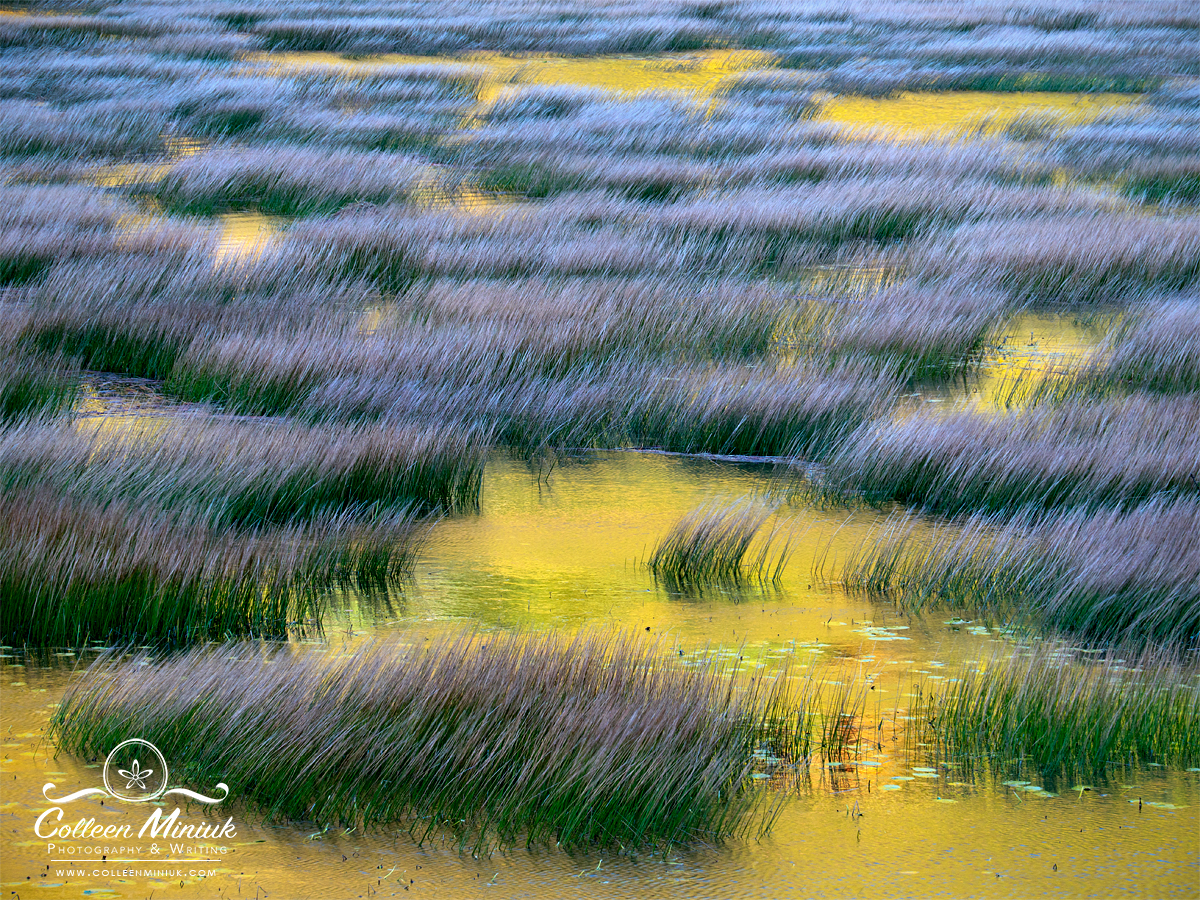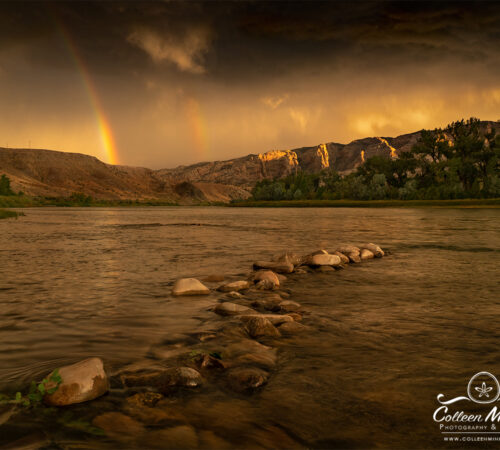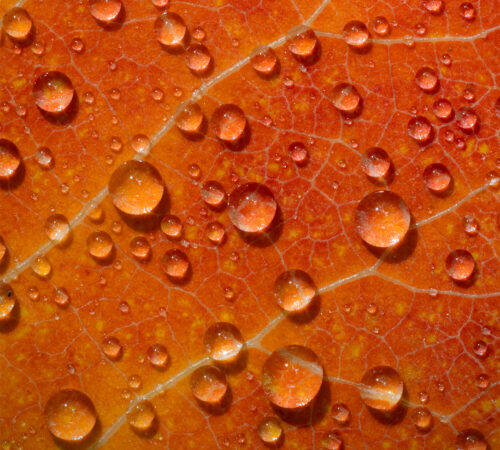It Takes Two

Dear Bubbles:
I recently heard about the “photo celibacy” approach at a recent conference. When trying to find your photographic voice or vision, how can cutting yourself off from studying other photographers help you develop your voice? Or expand it?
~Deborah
Dear Deborah,
For starters, as I mentioned a few weeks ago in my Developing Your Style post, I find the notion of “trying to find your voice or vision” a colossal waste of time and energy. You already have a voice. It’s largely a matter of recognizing it and having enough confidence to use it in your visual expressions.
That said, I firmly believe in continuing to improve our craft, expand our understanding of the world around us, and gain new our ideas for our work, which is where “photo celibacy” fits in. As you likely heard at the conference, but for the benefit of the readers here, a photographer practicing photographic celibacy makes a deliberate decision to stop looking at other people’s images. They do so because the impulse to directly copy or to create derivative photographs from existing work is seemingly too great for the photographer to overcome. This approach aims to provide a clear headspace in which a photographer can create his/her own work without being influenced by others.
To seek the creation of unique photographs is a reasonable and honorable objective. Plagiarism is defined in the Merriam-Webster Dictionary as “to steal or pass off (the ideas or words of another) as one’s own.” How many photographs have you seen from iconic locations, where the composition looks exactly the same as many other photographs? Maybe the lighting or weather conditions differ, but for all intents and purposes, it’s an offshoot of what’s been taken before. One Google search for “Mesa Arch” or “Bass Harbor Head Lighthouse” and you’ll see what I mean. Yet, the photography industry doesn’t consider this plagiarism as we would in other art forms like writing, painting, and music. We can’t copy a paragraph from a book, change a word or two here and there, and republish it as our own writing. That’s a lawsuit waiting to happen.
In the absence of legal compliance, then, it’s up to the individual to make ethical choices about what defines “copying” when it comes to photographic compositions, especially in popular places. I’m not opposed to people photographing iconic scenes. I’m opposed to people photographing iconic scenes and crowning their photographs as their own unique creative expression. Some say “Imitation is the sincerest form of flattery.” But this Oscar Wilde quote is often cut short. The full sentence is “Imitation is the sincerest form of flattery that mediocrity can pay to greatness.” I aspire to much more than mediocrity in my work. I hope you do as well.
While photographic celibacy seeks to prevent plagiarism in photography and encourages photographers to follow their own desires when making images, which I respect and support, it doesn’t align with my own—or the creative experts’—beliefs of how creative expressions come into existence. Right goal, but wrong solution for me.
Author Arthur Koestler suggests in his book, The Act of Creation, “The creative act does not create something out of nothing; it uncovers, selects, reshuffles, combines, synthesizes already existing facts, ideas, faculties, and skills.” Koestler referred to this subconscious process of morphing these raw materials into something fresh as the “bisociation of matrices.” In the early 1990’s, two cognitive scientists, Gilles Fauconnier and Mark Turner, polished Koestler’s idea and termed the revised theory “conceptual blending” (which was outlined extensively in their book, The Way We Think).
To oversimplify the brain’s complex functions tremendously, there are three areas of the mind involved in assembling a conceptual blend. First, the analytical parts of our brain collect, sort, and store selected external stimuli entering our heads through our senses every second of our life. Second, and to enable the third step, the prefrontal cortex, at the front part of your head above your eyes, needs to go on vacation (formally called “transient hypofrontality”). The prefrontal cortex, among other things, serves as a filter of “stupid” or socially unacceptable ideas, and often will prevent seemingly unrelated concepts from coming together. When it relaxes, though, step three happens: the creative parts of your brain start a spectacular food-fight with any information you have collected over your entire lifetime, mushing seemingly unrelated thoughts together to develop new ones. If you’ve ever had a dream before, you’ve experienced conceptual blending subconsciously. If you’ve ever labeled your dream weird, you’ve experienced your prefrontal cortex turning back on.
This blending can also happen while you’re awake and photographing if you consider unexpected likeness among existing elements—so long as your prefrontal cortex calms its bad self down. When you are observing a landscape or subject, you simply need to ask yourself, “What else is it?” Then don’t judge the answers you come up with, especially as “stupid.” Go with it…
When I look at the eroded sandstone in a canyon in Utah, I see not just intriguing rock formations, but patterns of lace. When I spot the curls of a sego lily unfurling, I see a Georgia O’Keefe painting. When I watch a field of wild geraniums sway in the breeze, I see a ballerina doing a graceful passé pose. If you do not study the patterns of lace, admire Georgia O’Keefe paintings, or attempt passé poses in adult ballet class as I do, the chances of you seeing any of it while you stare at the exact same subjects are slim to none. You would likely see something entirely different. Your individual knowledge, experiences, memories, and interests color the lens through which you see.
(For the record, metaphorical association and conceptual blending are closely related to pareidolia, which is the process of our brain trying to make order out of chaos based on our existing knowledge. This natural perceptual phenomenon leads us to see Snoopy in the clouds and faces in our toast.)
Our creative output, then, depends on our input. During my software engineering days at Intel Corporation before I became a full-time outdoor photographer, we used a term called “GIGO,” short for “Garbage In, Garbage Out.” It meant if you fed a software application garbage data, you would get garbage data out of the system no matter how well developers built the application. If people type incorrect information into Wikipedia, the Wikipedia article is incorrect despite there being nothing wrong with Wikipedia itself. The same goes for our brains and conceptual blending. If you are feeding your brain junk throughout the day, then your brain will use this as the raw material when it tries to connect you with your surroundings when you photograph.
Considering this, I try to fill my knowledge bank with as many things as I can find that excite and inspire me, including photographs, books, poetry, music, movies, etc. “After all, if ‘a new idea is nothing more or less than a new combination of elements,’ then it stands to reason that the person who knows more elements is more likely to come up with a new idea than a person who knows fewer old elements,” says author Jack Foster in his book, How to Get Ideas.
Author Austin Kleon echoes these sentiments in his book Steal Like an Artist but goes on to suggest that nothing is original, that all new ideas come from at least two existing ideas put together in a new and different way. As his title implies, though, he states that we should not copy or plagiarize as we go around collecting inspirational thoughts and concepts from anywhere and everywhere. Instead, we should understand the processes employed in the creation of a piece and define how to incorporate it into our own work in our own way. In other words, don’t rip stuff off. Find an inspirational outside idea to combine with your existing knowledge. Sound familiar? It’s conceptual blending.
Case in point: To acquaint myself about Acadia National Park ahead of my first artist-in-residency in 2009, I studied magazines, books, calendars, postcards, anything that would help me discover photogenic locations within the park. I happened upon an image made by Pulitzer Prize-winning photographer, Jack Dykinga. It featured lily pads in a pond of colorful water. It was gorgeous. At a photography event we were both speaking at, I asked Jack to tell me more about how he made his photograph. He did and said if I visited The Tarn during my trip, I’d likely see his scene. When I arrived in Acadia in November 2009, you can guess where I ventured immediately.
Under an overcast sky, I stood along the railing on Highway 3 with my camera, telephoto lens, and tripod in hand—and Jack’s photograph of the lily pads in mind. I pointed my camera toward the shallow pond, trying to isolate lily pads from the rushes. It didn’t take long before my enthusiasm started to wane.
“You know what? I don’t really like lily pads,” I said after reviewing the crappy images on the back of my camera’s LCD screen. “I don’t know anything about lily pads. I don’t know why they are here, why they grow, what they do to benefit the pond. I don’t have anything to say about lily pads.”
If I had nothing to verbally express about lily pads, I certainly had nothing visually to say about them. I packed my belongings up and left. Before I set foot in Acadia for my second residency 11 months later, I reassessed Jack’s image, believing there had to be something else, other than the lily pads, that inspired and excited me. There was. I loved the reflected light in the water.
I visited The Tarn in October 2010 about an hour after sunrise to see a magical scene of sunlight bouncing off Dorr Mountain into the shadowed pond. Reds, oranges, and yellows from the deciduous trees in the surrounding landscape danced around the rushes and lily pads. I could hardly contain myself. I felt like I was in a Monet painting. After exhausting my compositional options, I reviewed the images on the screen. I hadn’t made a single shot of a lily pad, but I had made hundreds of exciting ones of the reflected light. Not one looked anything like Jack’s original lily pad photograph.
Trying to mimic Jack’s image constituted stealing from an artist. Thankfully, I didn’t succeed. Understanding what I liked about his image and incorporating it into my own work was stealing like an artist. Big difference.
To steal like and not from an artist, it may go without saying that a photographer must possess enough mental strength to resist any urge one might have to imitate what you see. I can’t say I struggle with this–and I see thousands and thousands of images in magazines, calendars, postcards, workshop critiques, art shows, social media, and elsewhere. Looking at other people’s work doesn’t drive me to want to copy their expression. It gives me the awareness and knowledge I need to intentionally avoid recreating it. In this sense, studying photographs is the surest way I won’t copy someone else’s work, which is the opposite of the photo celibacy premise.
It’s unclear to me whether those practicing photographic celibacy gain inspiration from other sources beyond photographs. If the intent is to truly keep their vision pure, though, it would require avoiding all external stimuli, not just photographs. Would watching a video compromise your visual integrity? Would seeing a printed ad constitute a violation? Would reading an interpretive sign at a national park cause you to sacrifice your own voice? Where do you draw the line?
To each their own, but I can’t imagine wearing such blinders. It’s simply not how I want to go through life. As my friend and photographer Guy Tal said in his book More Than a Rock, “Can you think of writers who never read, chefs who only eat their own dishes, or scientists who never read others’ papers?” I can’t.
For me, practicing photography goes beyond a photograph. I create photographs for myself, first and foremost, but sharing my images enables me to build connections with my community. My goal as a photographer is to inspire others to enjoy the Great Outdoors. I couldn’t stay alive as a photographer, let alone fulfill what I feel is my life’s purpose, if people stopped looking at my images. This isn’t a “I’ll scratch your back if you scratch mine” proposition, but it seems off kilter, arrogant even, for me to ask you to look at my photographs while I neglect looking at yours.
Besides if I abstained from viewing your photographs, I’d miss out on your insights into the world—glimpses of details and scenes I can get nowhere else except from you. I can’t travel everywhere in the world in this lifetime. I can’t see it all. And even if I could, I wouldn’t see it the way you do. Photographs allow me to live vicariously through others, to challenge and expand my existing knowledge, to appreciate what others have deemed meaningful in their own life, because it enriches mine. Simply put, looking at your photographs bring me joy.
So I’m going to keep looking at photographs. I’m going to keep stealing like an artist to feed my creative process. And if that makes me a photo whore, so be it.
Be well, be wild,
Bubbles
——————————————————-
Have a question about photography, art, and/or the creative life? Need some advice? Send your question to Dear Bubbles at colleen@colleenminiuk.com to be possibly featured in a future column post. (If you’d prefer a different display name than your real first name, please include your preferred nickname in your note.)





3 Comments
Jimmy Gekas
Really enjoyed this article, Colleen! I figure that those that are new to nature photography have a more difficult time with this whole concept of steal like an artist and not from an artist…and I think that is totally ok until they find their way a bit. Of course, this is not limited to just nature photography. I am also a portrait photographer and it definitely applies to portraits.
Time to read more of your wonderful words.
Bubbles
Thanks for stopping by, Jimmy, and thanks for your kind words. I agree with your thoughts. I spent many-a-years imitating others by photographing classic comps but just adding in different light. It was a critical step in my own development. These places were also new and beautiful to me, so I wanted to make images of them. Of course, had I known who had done the first image of such-and-such a place, I would have been happy to attribute proper credit. But how do we do this in photography?! While I made salable images, I became bored and in the process of finding my own way, changed what photography meant to me–and ultimately how I approached it. And that’s what I hope for no matter what type of photography you do–landscape, portrait, or otherwise–that photographers are enjoying the experience, learning what works for them, and understanding why they photograph in the first place. 🙂 Thanks again!
Steve Traudt
This is an amazingly articulate and well reasoned response to this notion of photo celibacy. Along the same lines as Colleen writes above, I offer this experience. Back in about 1973, I took a UNL class on the “History of Photography”. We had to write a paper and while I thought about a subject, a conversation I had had with Norman Geske came to mind. He was the Director of Sheldon Art Gallery (Lincoln, NE) at the time which was an important repository of contemporary art. Mr. Gestke had told me “there is no such thing as original art”. I am sure he did not coin the term but it resonated with me and I wrote a paper to that effect. I studied various photographers searching for clues of what experiences and other art might have led to their certain photos or styles.
I got a “B” on the paper; Bubbles would have gotten an A+.
The other advice I try to follow is to “cross-fertilize” your brain/vision. I try to go to as many exhibits, symphonies, movies, plays, whatever. As Colleen remarks, “why wear blinders?”.